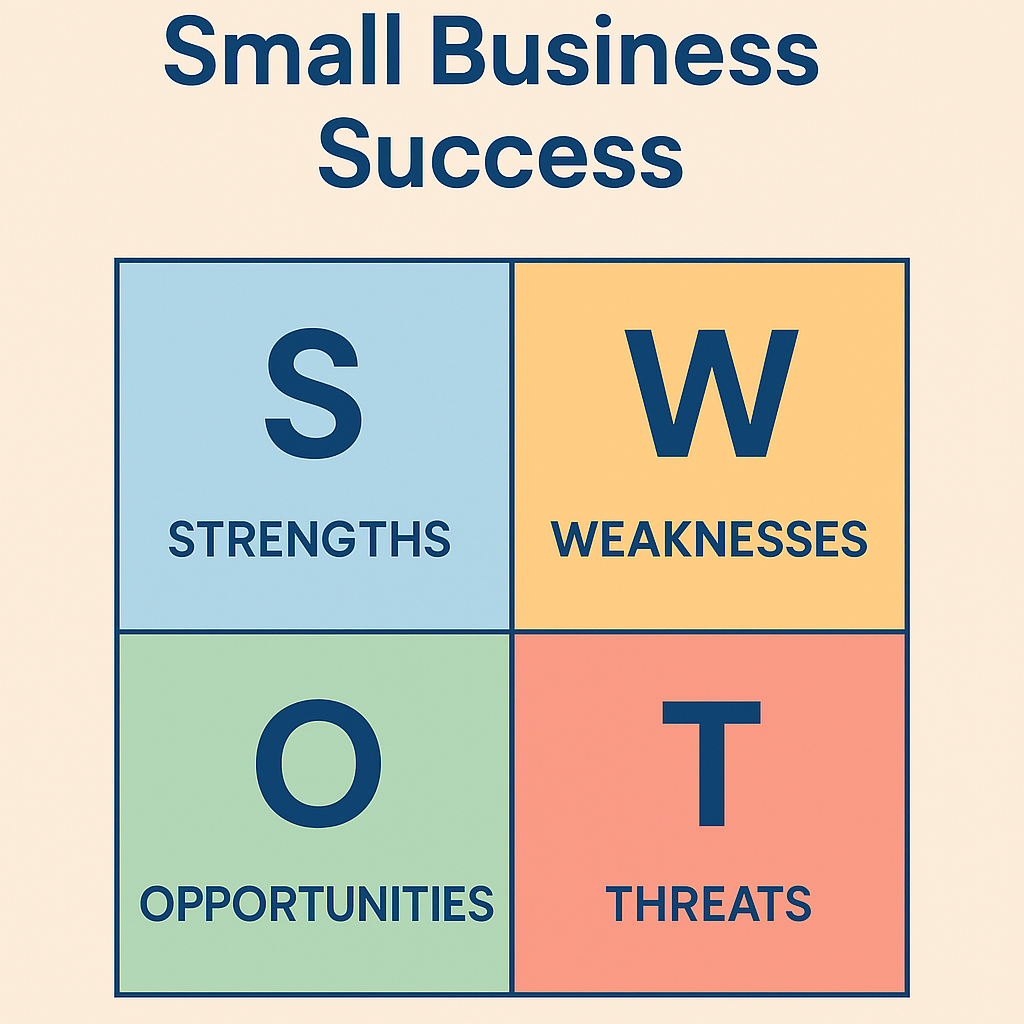This post is also available in:
Bahasa Malaysia
SWOT Analysis: A Simple Tool Every Small Business Should Use
Running a small business is exciting—but it also comes with challenges. Whether you’re just starting out or looking to grow, one of the best tools you can use to understand your business better is a SWOT analysis.
What Is SWOT Analysis?
SWOT stands for:
- Strengths – What your business does well.
- Weaknesses – Where your business struggles.
- Opportunities – External chances to grow or improve.
- Threats – External risks or challenges that could harm your business.
Think of it as a business health check. It helps you see the big picture and make smarter decisions.

The concept of SWOT analysis is most commonly credited to Albert Humphrey, an American business and management consultant.
He developed the SWOT framework in the 1960s–1970s while working at the Stanford Research Institute (SRI). His goal was to help Fortune 500 companies improve their strategic planning and understand why corporate planning often failed.
Interestingly, the original version was called SOFT analysis:
- S = Satisfactory
- O = Opportunity
- F = Fault
- T = Threat
Later, “Faults” was replaced with “Weaknesses,” and the model evolved into the SWOT we use today.
Why Is SWOT Important for Small Businesses?
Small businesses often have limited time, money, and manpower. That’s why it’s crucial to focus your efforts where they’ll have the most impact. A SWOT analysis helps you:
- Understand your current position
- Spot areas for improvement
- Identify growth opportunities
- Prepare for potential risks
It’s simple, free, and incredibly effective.
How to Do a SWOT Analysis
You don’t need fancy tools—just a piece of paper or a spreadsheet. Create a grid with four boxes labeled:
- Strengths
- Weaknesses
- Opportunities
- Threats
Then, brainstorm and fill in each box. Be honest and specific.
Example: A Small Bakery
- Strengths: Fresh ingredients, loyal customers, cozy atmosphere
- Weaknesses: No online ordering, limited seating
- Opportunities: Rising demand for gluten-free products, local food festivals
- Threats: New bakery opening nearby, rising ingredient costs
Using SWOT to Improve Your Business
Once your SWOT is complete, use it to guide your decisions:
- Fix weaknesses: Maybe it’s time to build a simple website for online orders.
- Leverage strengths: Promote your fresh ingredients and customer loyalty on social media.
- Act on opportunities: Add gluten-free options or join a local food event.
- Prepare for threats: Offer promotions to stay competitive or find alternative suppliers.
Final Thoughts
SWOT analysis isn’t just for big companies—it’s a powerful tool for small businesses too. It helps you stay focused, make informed decisions, and grow with confidence.
So grab a pen, gather your team (or just your thoughts), and start your SWOT today. Your business will thank you for it.